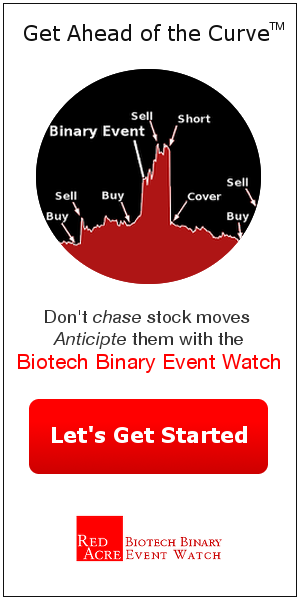
Insmed (NASDAQ:INSM)
- Phase 2 trial of inhaled ARIKACE in NTM missed primary endpoint of change in sputum
- Key Secondary endpoint of culture conversion to negative was statistically significant
- Trial provides important proof of concept but phase 3 will likely be needed
Trial misses primary endpoint but is still a win
On Wednesday Insmed announced top-line results from their phase 2 trial of ARIKACE for treatment of resistant Nontuberculosis mycobacterium (NTM) lung infections. The trial missed the primary endpoint of demonstrating a statistically significant difference in the semi-quantative endpoint of mycobacterium density as measured from baseline to end of study.
More importantly, the trial did show a statistically significant effect in teh secondary endpoint of culture conversion to negative for presence of mycobacterium. Three of 45 patients in the placebo arm demonstrated negative cultures at the end of study compared with 11 of 44 patients in the ARIKACE who had negative sputum cultures by the end of study. This result was statistically significant at p=0.01.
Culture Conversion Result Unexpected
According to the company, the reason culture conversion to negative was not chosen as the primary endpoint fo this exploratory study was because they did not expect to see such a robust response with just 84 days of treatment. Standard of care therapy is expected to show conversion to negative by 120 days on average according to statement by trial investigators on the company's conference call. Seeing a statistically significant number of patients cured by day 84 in the ARIKACE arm was an unexpected positive surprise.
Given that standard of care therapy is expected to demonstrate its full effect by 120 days, we wonder why the trial was designed to only have 84 days on-treatment. One possibility is that the statistically significant effect seen at day 84 might decrease over time as more patients in the standard of care plus placebo arm get cured later in the study.
Phase 3 Study Likely
While resistant NTM is a serious disease with no approved therapies, our view is that a phase 3 trail may be required by the FDA. The FDA may want to see treatment over a longer duration with follow-up for up to one year.
Recall, Insmed originally planed to do a phase 3 study in NTM. But the FDA, after placing a clinical hold on ARIKACE in 2011 asked the company to conduct a phase 2 study first to demonstrate safety and effectiveness of the drug for NTM.
Importantly, Insmed ran the phase 2 trial using the same size, enrollment criteria, and endpoints they had originally planed to use in their phase 3 NTM trial. In other words, the company effectively ran a phase 3 trial but called it a phase 2. The FDA originally wanted Insmed to use culture conversion to negative as the primary endpoint to support approval in NTM. Instead, the company chose to use a semi-quantative endpoint that it had designed on its own. For this reason, we expect that FDA will require a single Phase 3 trial, of longer duration, with culture conversion to negative as the primary endpoint.
Takeaway
Insmed has shown an important proof of concept for ARIKACE in NTM. The company is well capitalized with approximately 26 months' worth of cash runway. We believe that this cash runway would allow INSM to conduct a confirmatory phase 3 trial without the need to raise additional capital at this time. While there is a remote upside possibility that FDA would consider an accelerate approval application for NTM based on this phase 2 trial, in either case, the current results effectively de-risk any future phase 3 trial in NTM provided that the endpoints and trial design are substantially the same.
Insmend will likely also use these results to support the company's EU approval efforts in Cystic Fibrosis Pseuomonas infections and they may possibly seek an indication ofr NTM simultaneously depending upon feedback from regulators.


